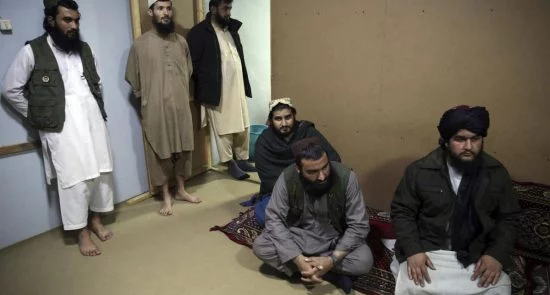Afghanistan, Politics, Security April 13, 2020
Short Link:US Urges Afghanistan to Expedite Prisoner-of-War Exchange Over COVID-19
The United States called on the Afghan parties to accelerate the process of exchange of prisoners of war due to the threat of coronavirus infection.
Ariana News Agency-
The process of exchange of prisoners of war is carried out on the basis of an agreement signed in Qatar between the United States and the Taliban movement under which the Afghan government must release 5,000 Taliban supporters from prisons before the start of inter-Afghan peace talks. In turn, the Taliban pledged to release 1 thousand government troops from captivity.
“Both sides should accelerate efforts to achieve the goals set out in the agreement between the US and the Taliban as soon as possible. The potential for outbreaks of COVID-19 in prisons poses a real threat and even more reason for urgent action,” the US Special Representative for Reconciliation said on Monday. in Afghanistan Zalmay Khalilzad.
On Sunday evening, local media reported that the Taliban had released 20 prisoners of war.
“Government forces were handed over to representatives of the International Committee of the Red Cross in the Shah-Vali-Kot county of Kandahar province. They were brought to the city of Kandahar, the administrative center of the province of the same name, to government agencies,” the statement said.
Official sources said earlier that 300 Taliban supporters have been released from government prisons over the past three days.
“We welcome the release of prisoners by both the Afghan government and the Taliban. The release of prisoners is an important step in the peace process and reducing violence,” Khalilzad tweeted on Monday.
The Afghan Ministry of Public Health announced on Sunday that over the past 24 hours, 52 new confirmed cases of coronavirus infection have been recorded in the country.
“Despite strict quarantine measures, the most – 28 cases were recorded over the past 24 hours in Kabul. Eight cases of infection in Kandahar and seven more in the province of Herat. The total number of cases in the country as of the morning of April 12 was 607,” in the message.
The first confirmed fact in the country was registered on February 24 with a 35-year-old resident who arrived from neighboring Iran. According to the Afghan authorities, the vast majority of those infected have either recently traveled to Iran, or have been in contact with citizens infected in Iran.










